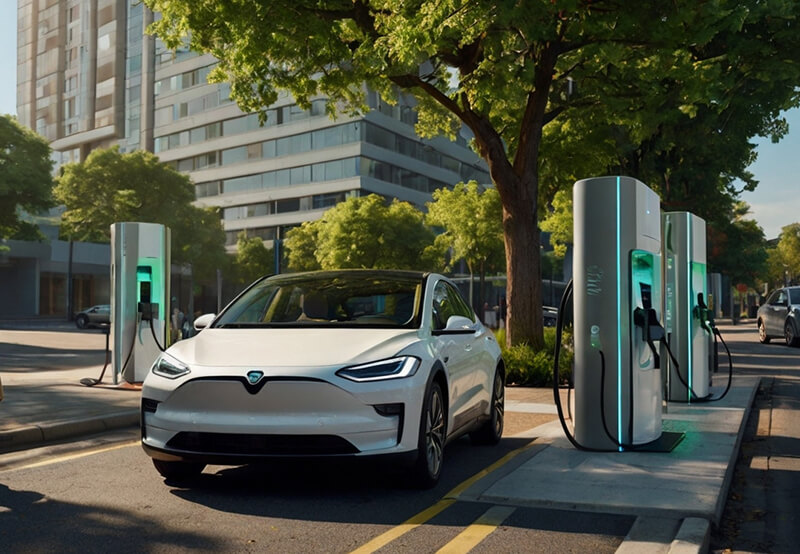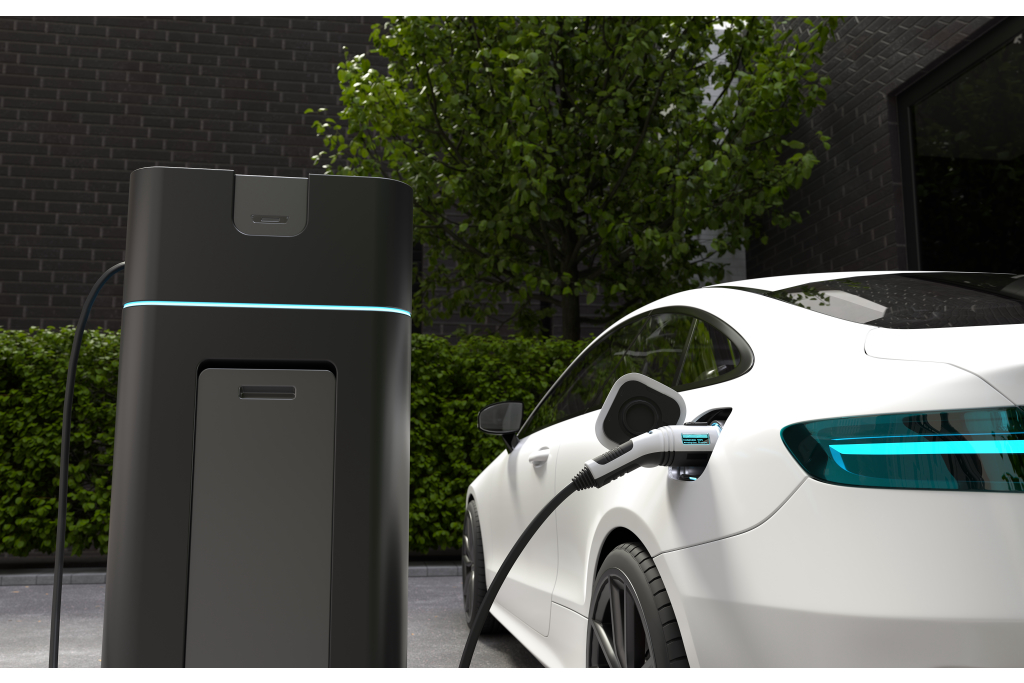Introduction
India is at the cusp of a green transformation, and electric mobility in India is taking center stage in this mission. With climate change accelerating and urban pollution reaching alarming levels, transitioning to cleaner modes of transportation is no longer optional—it’s urgent. The Indian government has recognized this and is accelerating efforts to electrify transport across 44 key urban centers, positioning these cities as hubs for a sustainable and future-ready economy.

This strategic focus on electric vehicle adoption in India across these 44 cities is not just an environmental imperative—it is an economic opportunity. From slashing carbon emissions to creating green jobs, the rise of electric mobility offers multi-dimensional benefits. As these cities become models of smart mobility India, the impact on climate mitigation and the economic ecosystem will be profound. The goal is clear: transform urban transport while steering India towards its climate commitments and economic growth targets.
Background Context
In order to figure out the vision driving this change we need to look to the wider government policy and urban planning. The government launched the Faster Adoption and Manufacturing of Electric Vehicles (FAME II) scheme to boost electric vehicle adoption in India through demand-side incentives, subsidies, and funding support for charging stations. Simultaneously, a plethora of states has implemented an EV policy in case regions have specific mobility requirements.
Urban pilot projects in cities like Delhi, Ahmedabad, and Pune have already demonstrated the viability of electric mobility in India. They are some of the cities having tried out e-buses, e-autos, and solar charging stations in the last mile. Their success stories have cast the way to the present ranging expansion of 44 cities.
Population density, level of vehicular pollution, the preparedness to adopt EV, and versatility of integrating the clean technologies were criteria used in the selection of these cities. The chosen cities are viewed as drivers of scalable change- an incubator of modern transport, clean energy, and smart mobility India.
Environmental Impact
The environmental benefits of embracing electric mobility in India are far-reaching. As almost 10% of greenhouse gas emissions in India are reported with transportation, electric vehicles represent one of the critical levers in mitigation of GHG pollution in the country. The conversion of 44 cities to EVs may save a lot in terms of emissions, as well as urban air quality, and smog-related health care costs.
This transition helps promote the Indian objective of net-zero by 2070. The transition toward electric vehicle adoption in India can eliminate millions of tons of CO₂ annually. This is significant particularly in the hotspots in the urban areas where air pollution has been declared as a health setback.
Healthier citizens can only mean a cleaner air environment Research indicates that fewer emissions can also lower respiratory illnesses, heart diseases and early mortality particularly in children and the aged. Thus, electric mobility in India is not just a technological or economic issue; it is a public health intervention.
Economic Implications
On the economic front, the electrification of transport offers powerful ripple effects. First, it opens up a vast field of employment—from EV assembly plants and battery manufacturing units to servicing, retrofitting, and recycling centers. The growth of electric mobility in India is set to create hundreds of thousands of green jobs across these 44 cities.
Second, reducing the country’s dependency on imported oil has profound economic implications. With electric vehicle adoption in India, urban commuters will shift from petrol and diesel to electricity, resulting in significant foreign exchange savings and energy security. This directly strengthens India’s macroeconomic stability.
Third, the development of EV infrastructure in India will drive investment in sectors such as electrical engineering, software, data analytics, and urban planning. Charging networks, battery swap stations, and energy storage units are emerging industries poised for exponential growth. Local startups and multinational companies alike are investing in these domains, making smart mobility India a fertile ground for innovation and entrepreneurship.
Urban Transformation
The 44-city initiative is already changing the face of urban transport. Municipal authorities are transitioning public buses to electric fleets, integrating charging stations with metro terminals, and facilitating e-mobility zones for autos, bikes, and last-mile delivery vehicles.
In Delhi, for instance, over 2,000 electric buses have been introduced, reducing daily emissions and offering smoother rides. Pune has implemented e-bikes and scooters through a shared mobility program. Bangalore, a leader in smart mobility India, is using real-time data to manage EV traffic flow and optimize charging times based on demand.
The model is inclusive—it spans public buses, private cabs, delivery vehicles, and even personal two-wheelers. As more cities adopt these practices, a new mobility culture is emerging—one that is digital-first, clean, and citizen-centric. The synergy of policy, infrastructure, and consumer behavior is steering India toward a smarter, greener future.
Challenges to Address
Nevertheless, a number of issues still exist. EV infrastructure in India is still developing, and the lack of widespread, reliable charging stations remains a barrier to mainstream adoption. Areas that need to be addressed include fast-charging networks, connector standardization and grid preparedness.
High upfront costs of EVs continue to deter many buyers, despite EV government incentives. The price difference between EVs and internal combustion cars is decreasing but it is not a zero difference The technology of battery and magnitude of production will be of great relevance in solving this.
Expendable battery disposal and recycling is one more challenge. This has the potential to be another environmental hazard without appropriate protocols to use. Therefore, policies on EPR should be enforced with increased vigor.
Technological innovation is valued as significantly as behavioural change. Educating consumers about the benefits of electric mobility in India, dispelling myths around EV performance, and promoting eco-conscious lifestyles will be essential for long-term success.
Future Outlook
Looking ahead, the future of electric mobility in India is promising. India also has an ambition of seeing thirty per cent of novel car sales as being electric by the year 2030. These 44 cities will serve as catalysts to this aim. Analysts predict that the EV market in India will be higher than $150 billion by the next decade due to demographic conditions, increase in awareness, and technological progress.
The government continues to revise and improve government incentives, including subsidies for buyers, tax cuts for manufacturers, and investment support for infrastructure projects. Indian startups and R&D labs are developing the new battery chemistry, solar-powered charging and integrated mobility apps.
International investors have their gaze on India as an important market. Firms in the US, Europe, and Southeast Asia are also partnering with Indian players in order to manufacture EVs that are low-cost and have a high level of reliability. The rise of electric vehicle adoption in India is thus not just a domestic trend—it’s part of a global mobility revolution.
In the long term, smart mobility India will redefine how we move, live, and breathe in urban spaces. It is concerning transforming cities that are livable, sustainable and inclusive.
Conclusion
The rollout of electric mobility in India across 44 cities is a transformative moment in the nation’s journey toward a greener, more resilient economy. It is strategic to counteract environmental destruction, dependence on energy and congestion. The impact on electric vehicle adoption in India, climate goals, job creation, and public health is already becoming visible.
Ev infrastructure in India, dynamic policies, behaviors, etc., are all slowly fitting a future that is cleaner, smarter, and more sustainable. Smart mobility India is not just an aspiration—it is an unfolding reality.
Frequently Asked Questions (FAQs)
Electric mobility in India refers to the use of electric vehicles (EVs) such as electric cars, bikes, buses, and autos as alternatives to fossil fuel-based transport. It is crucial for reducing pollution, lowering carbon emissions, and advancing India’s sustainability and energy security goals.
The key drivers of electric vehicle adoption in India include rising fuel prices, growing environmental awareness, improved EV technology, and supportive government policies such as subsidies, tax benefits, and investment in EV infrastructure.
Programs like FAME II (Faster Adoption and Manufacturing of Electric Vehicles), state-level EV policies, and EV government incentives such as purchase subsidies and tax exemptions are supporting the rapid shift toward electric vehicles across the country.
EV infrastructure in India is expanding with new public charging stations, battery swapping facilities, and smart charging grids. However, challenges remain in creating a fully connected and reliable network in all major and minor cities.
The 44 cities are pilot hubs for electric mobility in India, chosen based on their urban density, pollution levels, and infrastructure readiness. They serve as models for clean and efficient urban transport, accelerating broader adoption across the country.












